8/5-8/10
447.6 km from Canterbury
Thankfully by the time I left Laon the rain had stopped. But I was soon to find out that this only meant ominous things for walking...
I spent the first day walking to and over a tree-lined ridge called the Chemin des Dames. This ridgeline has had a surprisingly interesting history. It got its name in the 18th century when King Louis XV's daughters visited his onetime mistress so often that his mistress' husband had the route paved to allow easier access for the ladies. Since then it has been known for its strategic importance in warfare, in Napoleonic times as well as in WWI, where it was the site of devastating battles.
 |
| View of Chemin des Dames from Laon |
 |
| Looking back to Laon |
After crossing a few fields, I entered the forest and found my first obstacle: mud... deep mud.
 |
| Well crap... |
In 1914, the Germans took control of the Chemin des Dames ridge and the stone quarries around it, the most famous now known as the Cavern of the Dragon. In 1917 the French planned an offensive that proved so disastrous that 40,000 French soldiers died on the first day. Both sides suffered huge losses, and the French gained very little ground. Afterward, this offensive was considered such a disaster by both the allies and French public that the army suffered several mutinies and deserters in the preceding months. I really wanted to visit the Cavern of the Dragon, but unfortunately, it was far enough out of my path that I couldn't justify going.
 |
| Romanesque sculpture on a small church I passed |
Here you can see the elevated town of Laon on the butte.
 |
| Laon cathedral is very clear against the skyline |
I did visit the nearby ruins of the Abbaye de Vauclair though. I reached the ruins at about six in the evening just as it was cooling down and there were only a few people out and about exploring the ruins and small man-made lake across the street.
 |
| Abbaye de Vauclair |
The Abbaye de Vauclair had once been a Cistercian abbey founded in 1134 by Bernard of Clairvaux. It had been heavily bombed in WWI, and though it hasn't been rebuilt, volunteers did help clean up the ruins and planted a herb garden.
The ruins were beautiful. You could see the gatekeepers house, well the foundations of it at least! There was also church foundations right next to it where all you could see was the walls and altar.
The giant dovecote dominated the scene with its massive brick walls. I couldn't imagine needing a dovecote that large but it must have been necessary.
The church itself was terrific in its picturesque decay. You could see where the columns were between the nave and side aisles. The chapter house was the best-persevered building.
 |
| Entrance into the chapterhouse |
 |
| Gothic archway |
 |
| Chapterhouse |
After leaving the ruins, I had to cut across a 5-kilometer swath of forest. I went in blindly, assuming it would be a nice jaunt in the woods where I might even find a nook to pitch my tent for the night. I could not have been any more wrong! I have always been a delicacy for mosquitoes; I'm not sure why but they've always had a hankering for my mom, my brother and me while practically eschewing my father. I had quickly realized that France had a lot of bugs and mosquitoes, so while in Laon I took precautions and bought a mosquito repellent bracelet hoping it would do the job and not require me to use bug spray since I hate the noxious stuff.
 |
| No! It did not work! |
So, armed with my repelling bracelet, I walked into that forest expecting it to work as it promised it would, like an invisibility cloak. Nope. There was nothing that could have helped. The four days of rain before that fateful day had watered the mosquitoes like weeds and there were thousands and thousands in that forest. Being the only one on that path, they all came hunting after me. There were also thousands of flies that joined the bacchanal! I held the bracelet out in front of me like a charm against evil and ran/scurried as fast as I could. There was a cloud of flies and mosquitoes around me, so I used my other hand to use my directions as a fan/fly swatter. I seriously wondered if I might die on that forest path. I'm sure someone somewhere has died from mosquito bites. There were certainly enough to suck me dry! But eventually, in a sweaty, bitten, panicked mess I made it out of the forest alive. I got many bites, but I think the bracelet did help some because I should have been eaten alive!! That night camping just outside of Corbeny in my tent was miserable though.
 |
| A memorial plaque in Corbeny |
At this point, I finally reach the great champagne fields surrounding Reims. As far as the eye could see there were vineyards with small villages interspersed. It was beautiful to walk through, but unfortunately, there wasn't very much shade, and when there was a small forest you would be beset upon by mosquitoes.
 |
| They weren't ripe yet and super tart |
 |
| Town surrounded by vineyards |
The next day I made it to Reims! I walked along the canal on the way into the city which was quite lovely and crowded on a hot summers day.
 |
| Little sweat goatee going on |
I got a room with a fluffy comforter and a clean bed in a four person dorm and washed all of my clothes for the first time in a machine. I felt so clean and refreshed bringing my clean clothes back to my room wearing only my rain jacket and rain pants. I soon met Sara, a lovely German girl who was backpacking through France and Spain. We had the dorm room to ourselves a for two nights, and it felt like such a luxury. Sara spoke perfect English, and it was amazing being able to converse with someone in English again.
The next day I set out to explore the sights. Reims has historically been a significant city for the French monarchy as almost all the kings of France were crowned here, a tradition started by the baptism of Clovis by Saint Remi in 508. The first stop was Reims cathedral.
I had been very excited to see this monument, and in my mind, I pictured it as even grander than the cathedral in Laon. Unfortunately, they were doing extensive renovations to the front and back of the cathedral, and the outside was a bit uninspiring around all the scaffolding.

I was excited to see the equestrian statue of Joan of Arc in front of the cathedral raising her arm in a salute. This would be the first of many things Joan of Arc in the next few weeks. Joan of Arc was a peasant girl from the Alsace-Lorraine area of France. She was born during the Hundred Years' War between France and England. At an early age, she heard the voices of saints and angels and set out to help the Dauphin, Charles, be crowned in Reims and free France from English hands. She is legendary in French history as her actions helped the French win the war and pushed the English out of France (for the most part). This area of France is near where Joan was born and after she helped free the city of Orléans from the English siege she helped Charles VII to Reims to get crowned. In the next few towns and cities I visited, I would always see a 'Rue Jeanne d'Arc' as well as at least one statue of her. Several of these towns had up to three monuments that I found!!
 |
| Hehehe |
When I was entering the cathedral, I saw the famous smiling angel to my left. This sweet face is something of a mascot for Reims as during WWII its head was smashed off and found later in the debris. They fixed him back up, and he remains a martyr of the war.
 |
| Sweet smile? |
 |
| Or mocking the nauseous saint missing the top of his head... |
Reims cathedral is covered in sculpture and has thousands and thousands of figures. At one point I read somewhere that someone tried to count the number of human figures depicted on the building and the counted something astounding--but as I don't remember the number that makes this comment rather asinine doesn't it.
 |
| Reims cathedral is almost entirely covered in sculpture |
 |
| I always appreciate a grisly hell scene |
The inside of the cathedral was more attractive. The first half of the nave was bright because all the stained glass had been broken and replaced with regular glass but at the transept, the stained glass had been restored, and the mood was more ethereal.
 |
| Nave |
 |
| The lighting changes halfway to the apse |
 |
| What the outside is supposed to look like |
I quite enjoyed the modern stained glass and the inside statue of St Joan of Arc. This one much more thoughtful and contemplative, as if listening to her Angels. Although, as my advisor would always state, Joan never wore dresses after she left her home even though many depictions of her show her that way.

Reims was heavily bombed during both WWI and WWII, and the cathedral did not escape the damage.
 |
| First shell hitting Reims cathedral during WWI |
Reims is also famous for its art deco buildings of which the national library is a beautiful example. Everything is cataloged by computer now, but they still have a room full of little drawers with the index cards.
 |
| Card catalog room filled with rich mahogany |
Saint Remi basilica ended up being much more interesting for me. Outside there is a modern statue of Saint Remi baptizing and crowning King Clovis.
 |
| Western facade of St Remi |
Legend states that a dove brought down a holy ampulla of oil just for the anointing and that oil has been used to crown all the French kings since. Unfortunately, the original ampulla was destroyed during the French Revolution as a sign of the monarchy, but some of the oil was saved and used later on.
 |
| Clovis' baptism |
 |
| St Remi defeating the Devil |
 |
| Nave |
 |
| The tomb of St Remi |
St Remi basilica was also heavily damaged in the wars, and there were photographs showing some of the worst damage.
 |
| The nave roof was completely destroyed |
 |
| The cloister |
 |
| I loved this hidden man sitting. He is usually covered by the open doors. |
This cathedral was beautiful and had a cloister attached. In the cloisters was a museum showing the history of Reims and the basilica.
Saint Remi of Reims was an apostle of the Gauls and converted Clovis to the Christian faith before his death in 533. At the end of the 8th century, a Benedictine abbey was established in Reims. During the French Revolution, the monks were driven away, and the monastery was home to Reims military hospital until 1816 when it became a civilian hospital. Only in 1978 was the abbey transformed into a museum and restored. The museum houses a series of rooms that show the medieval architectural splendor of the royal abbey in its heyday. These rooms are the ancient medieval parlor, the cloister, the grand staircase, and the chapter house.
 |
| Cloister attached to the basilica |
 |
| Original floor tiles from the Middle Ages |
Next, several rooms were hosting Gallo-roman history and artifacts.
 |
| Roman sarcophagus |
The tapestry hall houses the collection of 10 tapestries of the life of St Remi made between 1523-1531. The group of tapestries of the life of St Remi was amazing!!
 |
| Reims consumed by fire |
 |
| King Clovis in battle |
 |
| Medieval Reims |
The Musicians, a group of five statues that were attached to a 13th-century house in Reims, had an interesting tale to tell. One of them had had his arm cut clean off for a coronation procession because they were worried the arm would be in the way of the parade...
 |
| The Musicians in situ |
 |
| No arm on this violinist! |
Later I walked to the forum square to see the Hôtel le Vergeur. This was the most fantastic museum. For the first half of the tour I was the only person- later two others joined- and the guide, Christine, was so knowledgeable and vibrant! This townhouse was built in the 13th century near the old market square where the fabric market was held. It was named after Nicolas Le Vergeur. The townhouse was modified in the 17th century before changing hands and becoming a champagne house and eventually fell into the hands of a wealthy man of the name Hugues Krafft. The Kraffts were a family from Germany who had moved to Reims to trade in champagne. His parents had died young and left him with a fortune. He spent his life traveling around the world twice, buying art and artifacts. He purchased this house in 1910 for a private residence as well as the headquarters for the society he had founded to protect the old town of Reims, but it was heavily damaged in the First World War. He spent the next two decades fixing it and was only able to use it for two years before he died!
 |
| Hôtel de Vergeur |
 |
| Plaque celebrating the 500th anniversary of Joan of Arc's mission to Reims |
 |
| Courtyard |
 |
| This room was almost unusable, he created it for aesthetics outside but it was a tiny closet on the inside |
He imagined the bottom floor to be a museum for all of the artifacts that he bought. Between 1908 and 1925 Krafft saved many of Reims' facades and church gates from demolition and exhibited them in his gardens. He also collected fireplaces, overmantels, and staircases. These were displayed in the gardens which were filled with remnants of buildings that had been destroyed.
 |
| Rescued building facade |
 |
| Another rescued facade |
 |
| Rescued architecture from around Reims |
This one building of the complex was never reconstructed after the WWI bombings to serve as a reminder of the atrocities of war and so houses all the scavenged pieces of Reims that Kraft rescued.
 |
| Ruined section |
I couldn't take any pictures inside the house, but the whole thing was amazing. The rooms were decorated exactly as Krafft had left them in all their glory! The best part was the room dedicated to Albrecht Dürer, one of my favorite Northern Renaissance artists. A vast collection of Dürer's prints fell into the museum's hands consisting of a complete series of the Apocalypse and Large Passion as well as single prints such as Adam and Eve.
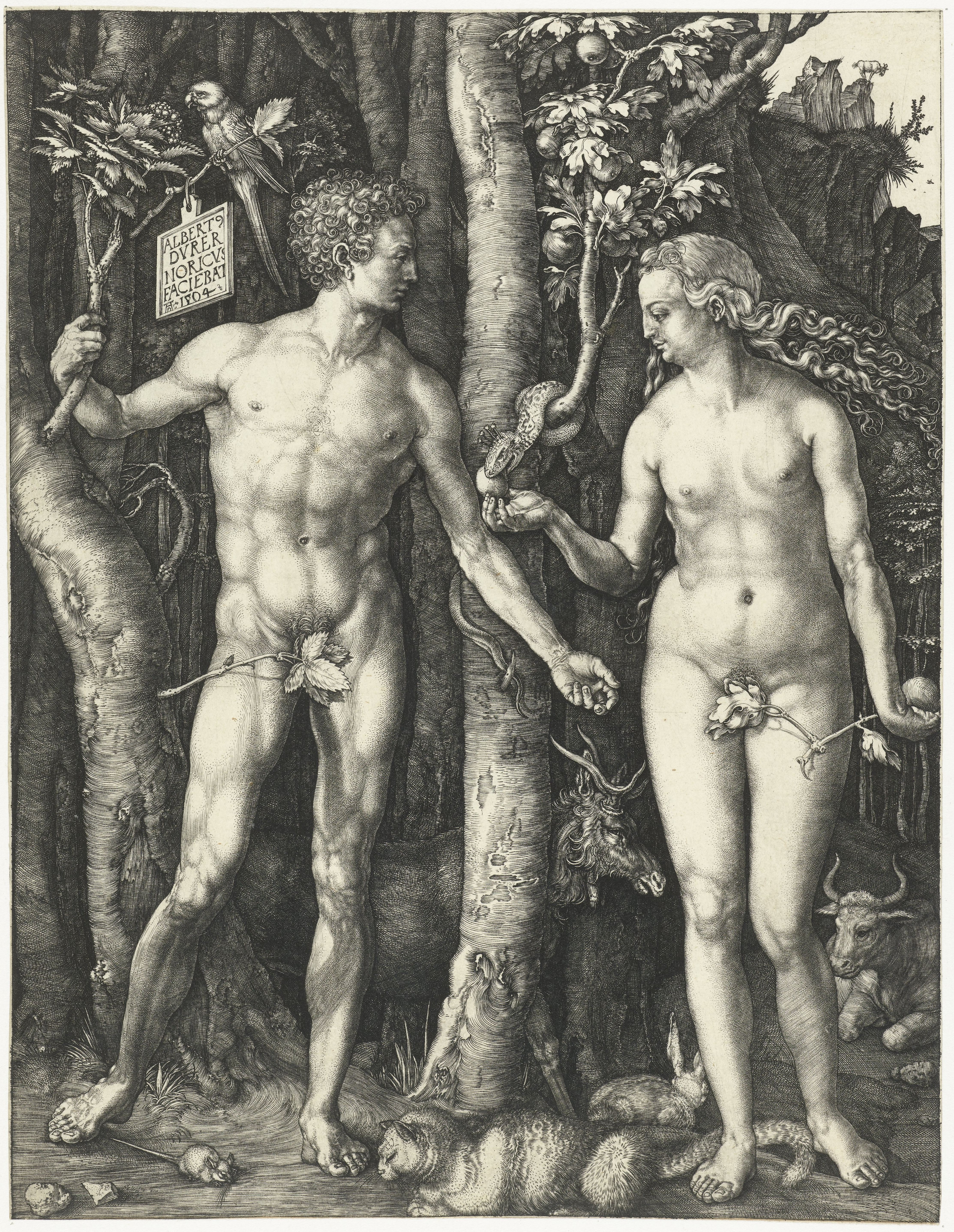 |
| Adam and Eve by Dürer |
Leaving the museum, I visited the Porte de Mars but unfortunately, it was completely covered in scaffolding, and I couldn't see any of it. I walked back to a bustling area that had many restaurants and a lively night scene and splurged on a nice dinner. It was well worth it!
 |
| Beef carpaccio! |
On my last night in Reims, Sara and I went to see the light show on the Cathedral. I am so happy we did this, it was beautiful! We could finally see what the front portal looked like and the art and lights were amazing, especially mixed with the music. It was almost psychedelic really. Sorry that these are a bit blurry it was hard to focus the camera!
I did also visit the beaux art museum. This had a very extensive modern section. There was one painting of a man named Rene that looked exactly like Lord Voldemort. I really wish I could have taken a picture, but they were not allowed in that area. Suffice it to say Rene was a very pale and scary figure, with a tiny nose!!
Until next time!!
































































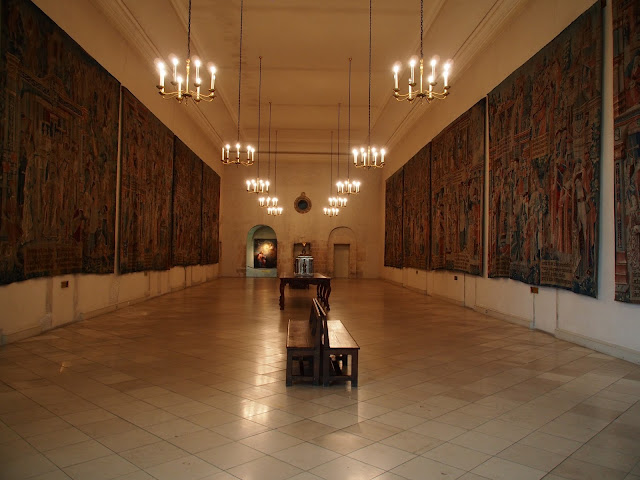









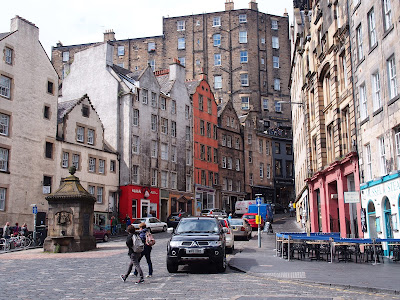
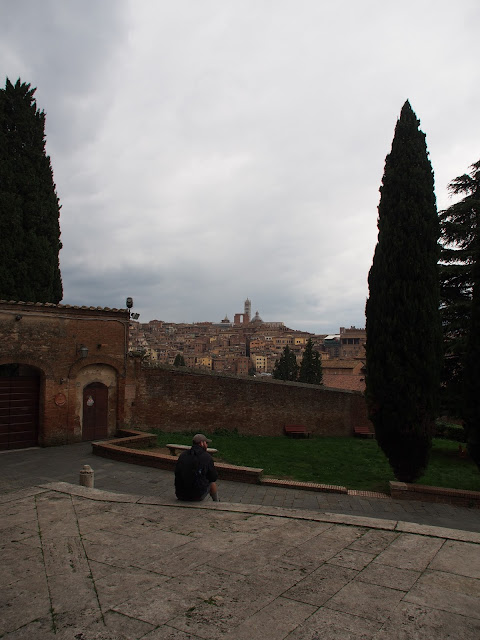

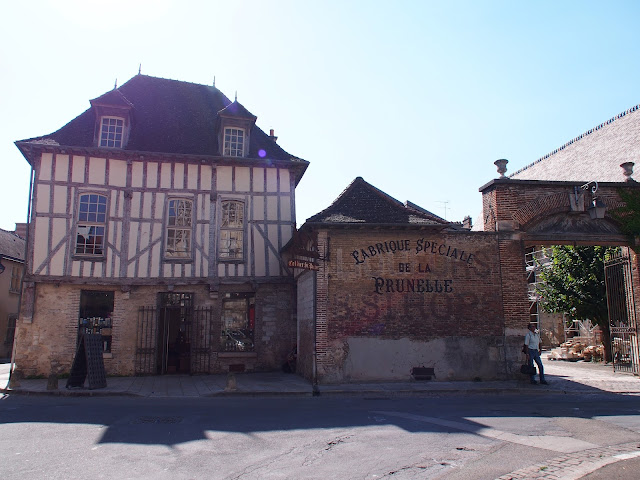




Comments
Post a Comment